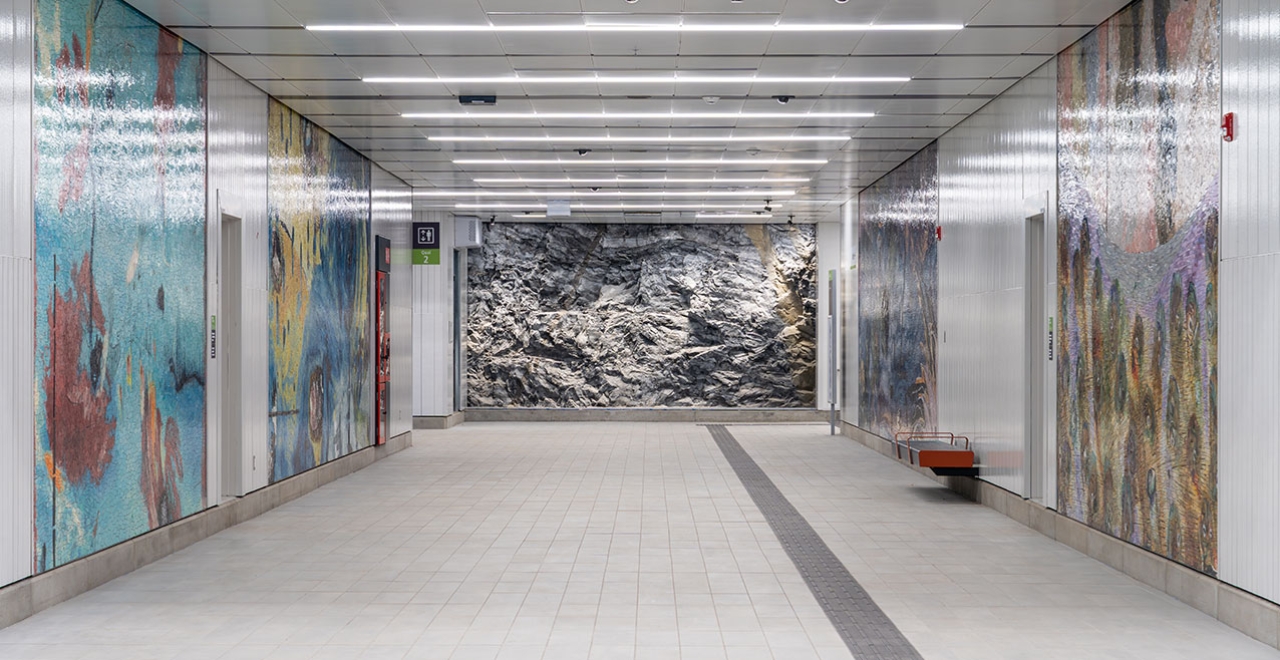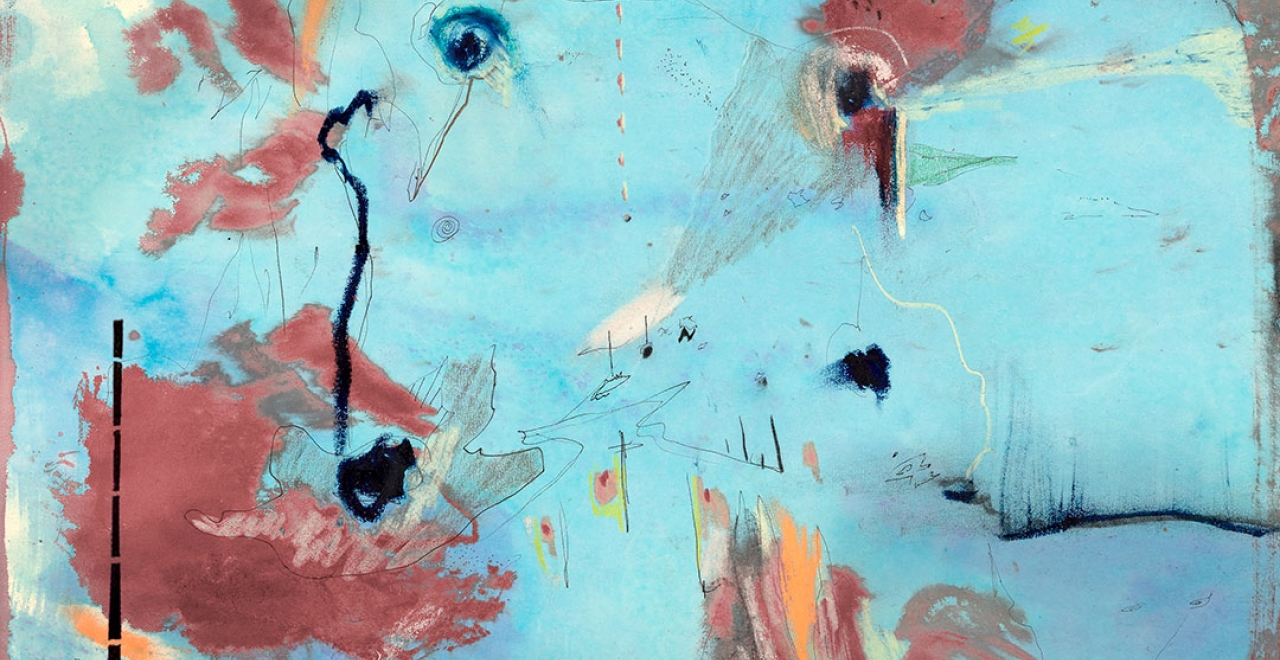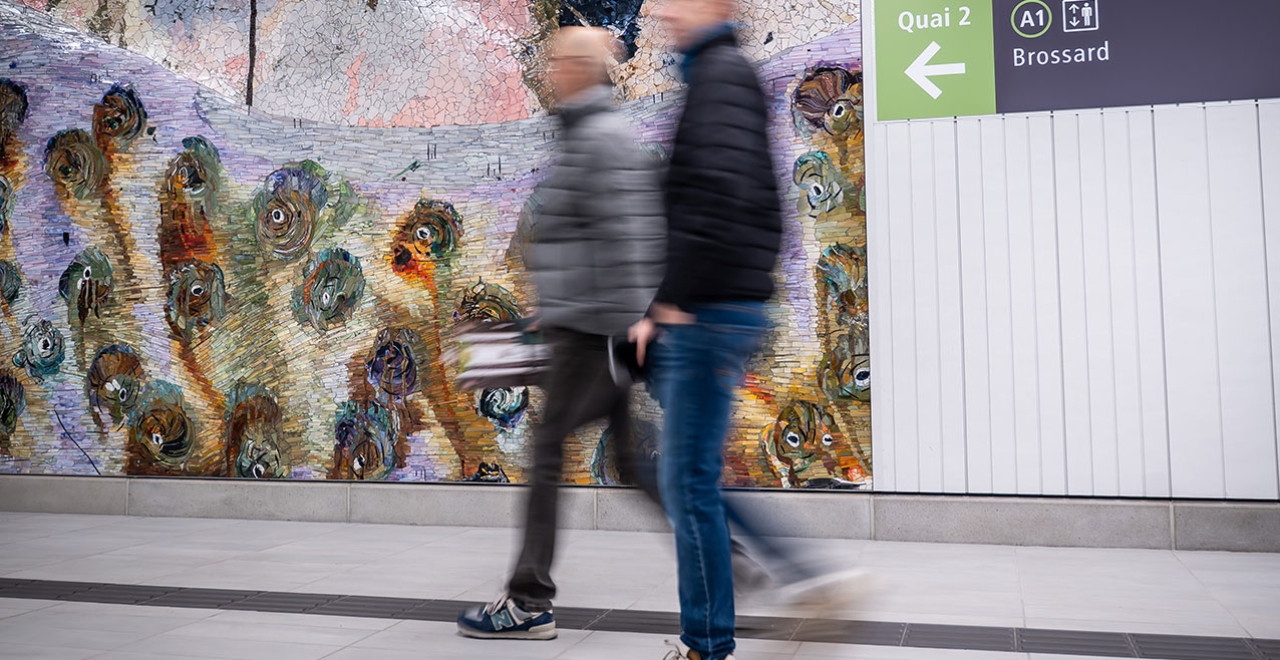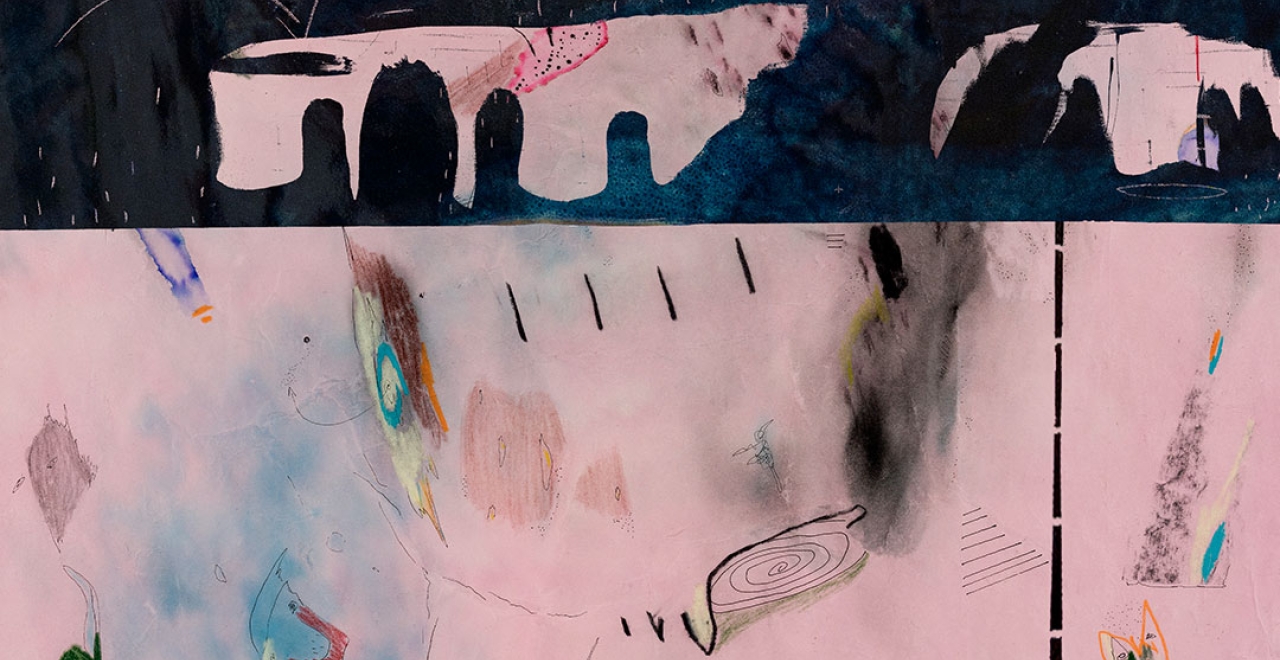Le Mont habité
Manuel Mathieu
Édouard-Montpetit Station
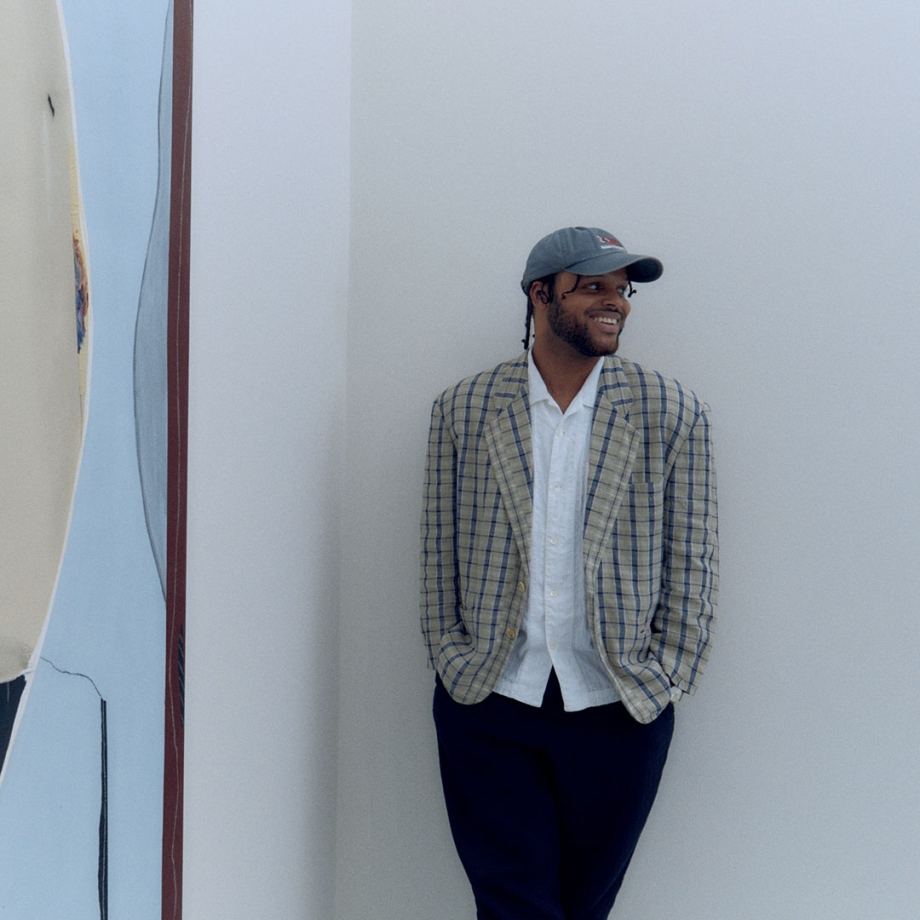
Artist: Manuel Mathieu
Manuel Mathieu is a multidisciplinary Montréal artist of Haitian origin. His work draws on the tension between his Haitian heritage—rooted in a spiritual and self-taught artistic practice—and his formal training in visual arts. His paintings shift between abstraction and figuration, often inspired by an anecdote, a cultural cliché or a memory of his youth in Haiti.
About the work
The Édouard-Montpetit Station has the distinction of being the deepest in Canada and the second-deepest in North America. Manuel Mathieu echoes this deep-rootedness of the REM in his work Le Mont habité.
To create this five-panel work, Manuel Mathieu drew inspiration from the type of rock—gabbro—in which the station was excavated. Based on microscopic observations and analyses of gabbro samples, the artist selected the materials, colours and mosaic forms that make up the work.
Through this process, Manuel Mathieu highlights what precedes us and will outlast us: the strength of stone, its timeless nature, its geological heritage. Passengers who pause in front of his panels before descending into the depths of the station may even recognize within them their own perceptions of the outside world and fragments of remembered landscapes.
These first mosaics by Manuel Mathieu resonate with the rest of his work, starting with his vibrant, colourful and lyrical painting.
“Standing before this space we have carved into Mount Royal, into this great mass of gabbro, I immediately asked myself how I could poetically underscore the presence of this stone that now lies before our eyes.”

